|
|
Post by shamus on Jun 15, 2009 21:27:27 GMT 12
I know that this is not the right thread but I so enjoyed reading flyerNZs story of history of photography that I thought I would add mine as it is so similar. My first camera was a plastic Baby Brownie that took little square photos. I next graduated to my fathers Italian Contessa Nettle which I managed to ruin when a wave hit me on the harbour and the shutter corroded. My first 35 mm was an Agfa Sillette which although cheap took quite good photos. My first real camera was a Canonflex 1958 model which I still have today. This was followed by a Canon FTB which a lot of the photos posted were taken on. I also had a 2 1/4 Sq Ikoflex. then a Rittreck and now a 9 megapixel Fuji Digital which I use today. I have added a couple of photos to show when my interest in aviation began. Note the pilots wing wore proudly on the cardigan.  About to take my first flight out of Harewood.  And trying to impress my future wife by flying to Great Barrier for picnics after I got my PPL.  |
|
|
|
Post by flyjoe180 on Jun 16, 2009 11:45:37 GMT 12
The picnics worked then?
|
|
|
|
Post by Dave Homewood on Jun 16, 2009 12:52:57 GMT 12
Neat stuff Shamus! Looks like the pilots wings worked too.
|
|
|
|
Post by corsair67 on Jun 16, 2009 13:38:52 GMT 12
Smooth operator! ;D
|
|
|
|
Post by shamus on Jun 16, 2009 17:19:56 GMT 12
Yes it worked. 35 years and 2 kids later we are still together. All in all my logbook shows 50 trips to Great Barrier. I remember the airfield as it was originally before the new runway was built.
|
|
|
|
Post by flyjoe180 on Jun 16, 2009 19:41:17 GMT 12
It took 50 trips?!
|
|
|
|
Post by Peter Lewis on Jun 16, 2009 23:43:14 GMT 12
Resisting the urge to post the family album, I shall move on: Harvard NZ1086 had an unusually varied RNZAF career, including a period with the fire-watching boys at Rotorua, before being withdrawn from active service in 1957. Converted to INST176 it served at Woodbourne before finally being sold by GSB tender during 1978 to Engine Support Inc., Florida, USA. Passing from them to d'E C Darby, Auckland in the late 1970s it was sold abroad to Australia soon after and has not been sighted since. At Woodbourne September 1962: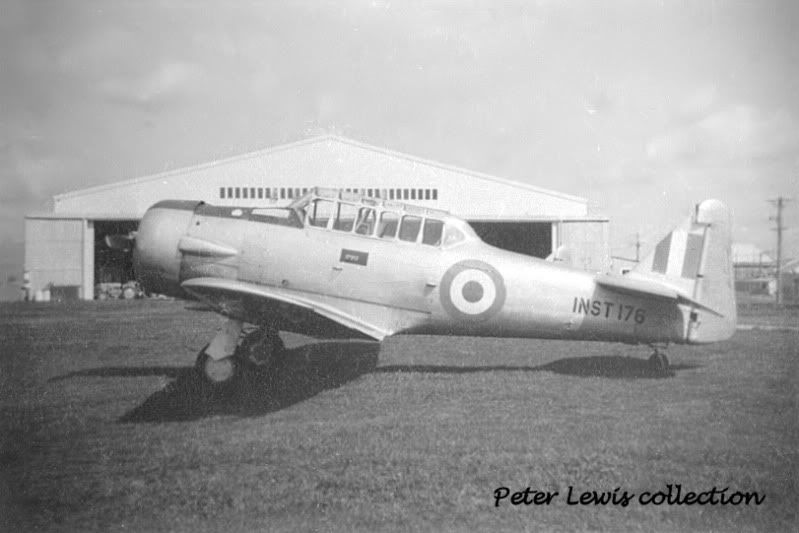 NZ1087 served to Wigram until the end of the Harvard era, and was finally grounded in 1977 and allotted the instructional serial INST213. After a relatively short time at Woodbourne it was returned to Wigram in October 1981 for display at the RNZAF Museum. Initially displayed at NZ1087, it was later repainted as NZ948 (why do they do this?) At Wigram 24Aug1964: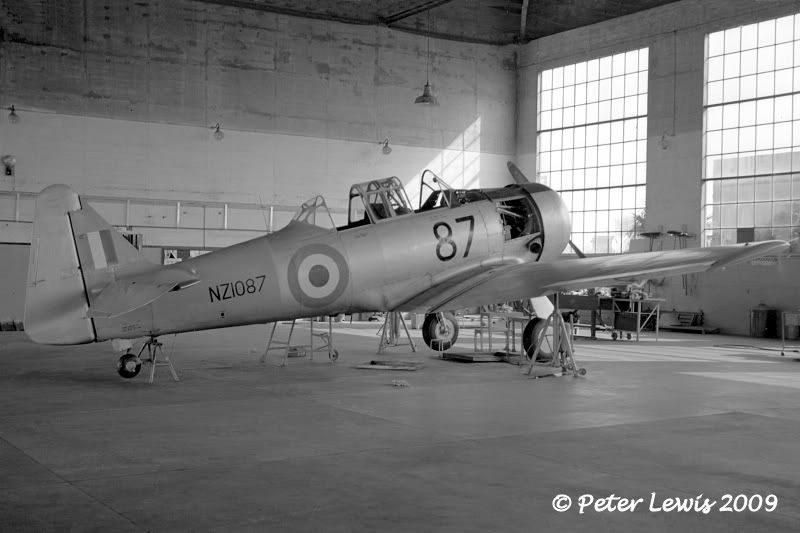 In the museum at Wigram as NZ948 early 1998: In the museum at Wigram as NZ948 early 1998: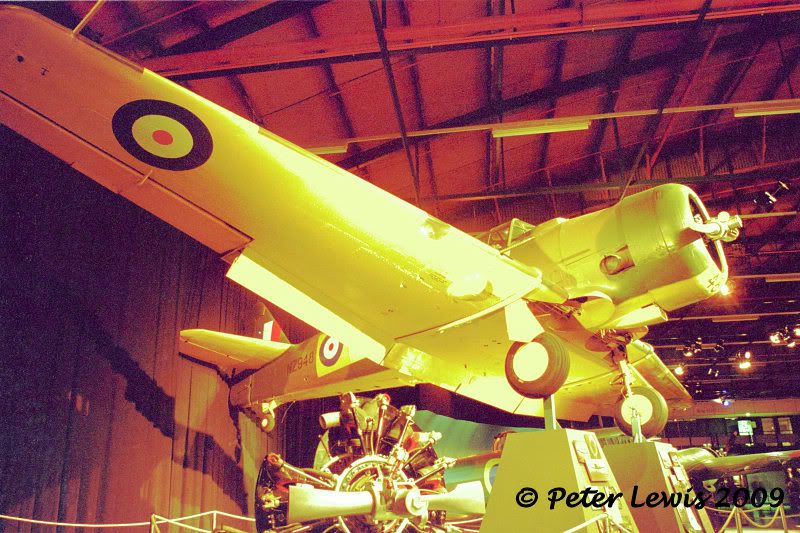 NZ1089 was another Harvard that was grounded in 1957 as an instructional airframe, becoming INST177. After service at Woodbourne it also was sold by GSB tender during 1978 to Engine Support Inc., Florida, USA and then passed on by them to the Taranaki Transport Museum at New Plymouth. It is currently on display there along with Brewster's Flying Flea and parts from Oxford NZ277. At the Taranaki Transport Museum 1996: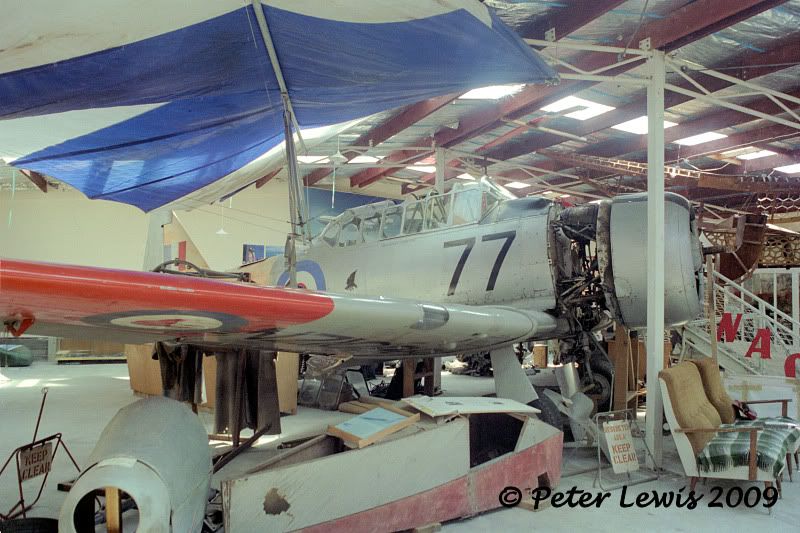 |
|
|
|
Post by Dave Homewood on Jun 17, 2009 0:08:49 GMT 12
I for one am glad that NZ1087 has been painted into that wartime camouflage.yellow training scheme. Now that MOTAT's Harvard is no longer in that scheme it's the only one left in NZ in those important era colours. I guess NZ1087 mustn't have worn the scheme so they found a more suitable serial number for it. It is a little odd, but then their Avenger, Mustang, Beaver, and Spitifre are also wearing different markings and colours from what they originally wore. The odd thing about this one is they chose a Harvard that still exists.
|
|
|
|
Post by baz62 on Jun 19, 2009 16:53:56 GMT 12
I didn't realise NZ1087 was painted as Motats example!!I'd also like to point out that INST 177 (NZ1089) has the geared R1340 fitted as used in the Aussie version of the Harvard the Wirraway. You can see the nose of the reduction gearbox and propshaft just poking out past the cowling. The Harvards R1340s were direct drive meaning the propshaft was actually just a continuation of the crankshaft.
Looks like she has at least one wing off another Harvard as well going by the mismatched paintschemes!
Baz
|
|
|
|
Post by Deleted on Jun 19, 2009 17:39:57 GMT 12
I'm with Dave, I absolutely love that colour scheme. Similarly we could ask Brendon Deere to repaint his Spitfire in its "rightful'" service colours rather than those of EN568......
Anyway, please continue with the photos! Always enjoy seeing the latest updates to the thread.
|
|
|
|
Post by Peter Lewis on Jun 20, 2009 9:51:49 GMT 12
NZ1091 was another Harvard that enjoyed a long and active service life. Eventually sold by GSB tender number 022107 to W. Williams, Mount Maunganui and became ZK-ENC with W J D & S M A Williams, Tauranga in June 1978. At Wigram 24Aug1964: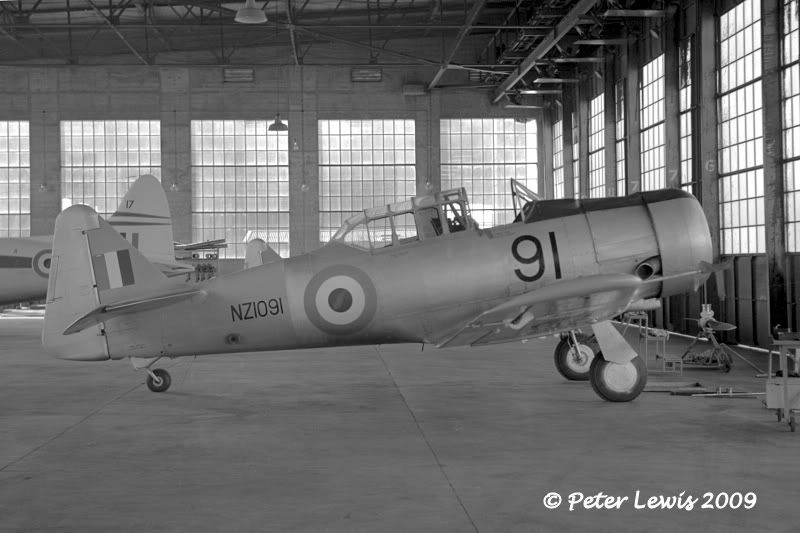 Two days later it appeared wearing a different exhaust system and undertook a test flight with this equipment. At the time, I believed it was an attempt to reduce the noise levels in response to complaints from nearby residents, but looking at it now it looks more like a smoke-generating apparatus. There appeared to be a certain amount of 'this is new, how exciting' about it at that time. Does anyone know the history of Harvard smoke in NZ, was this the first time this had been attempted here? At Wigram 26Aug1964: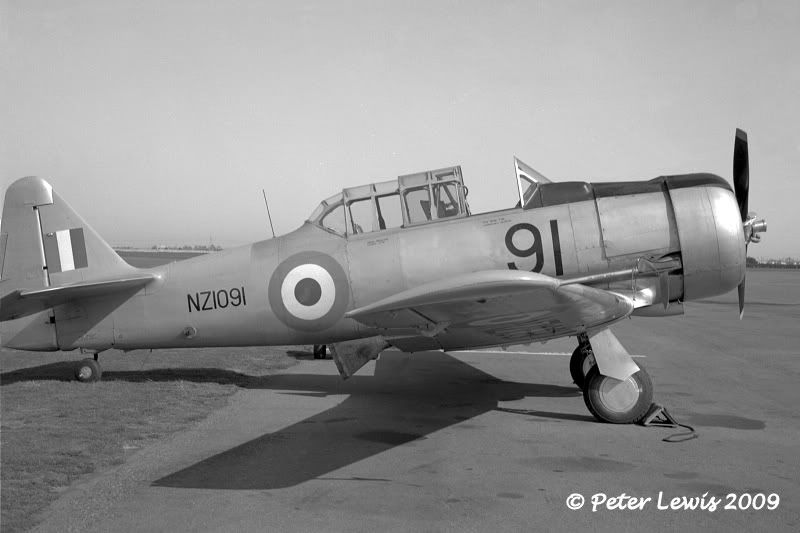 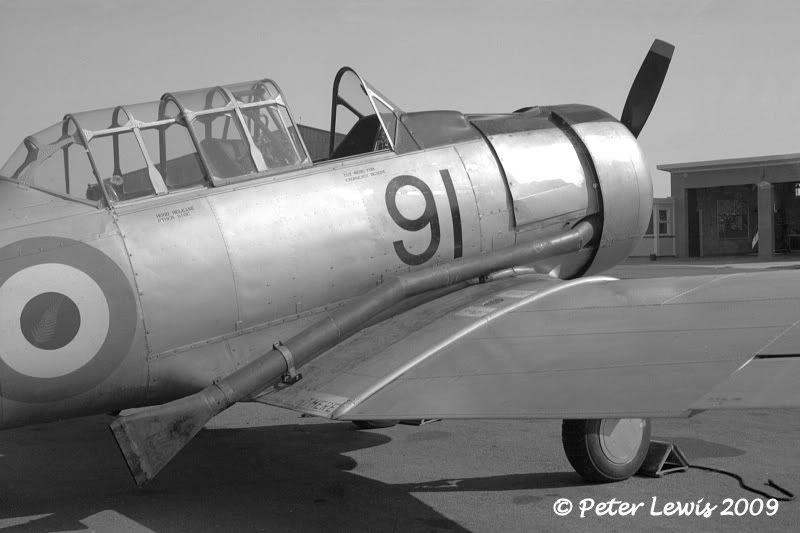 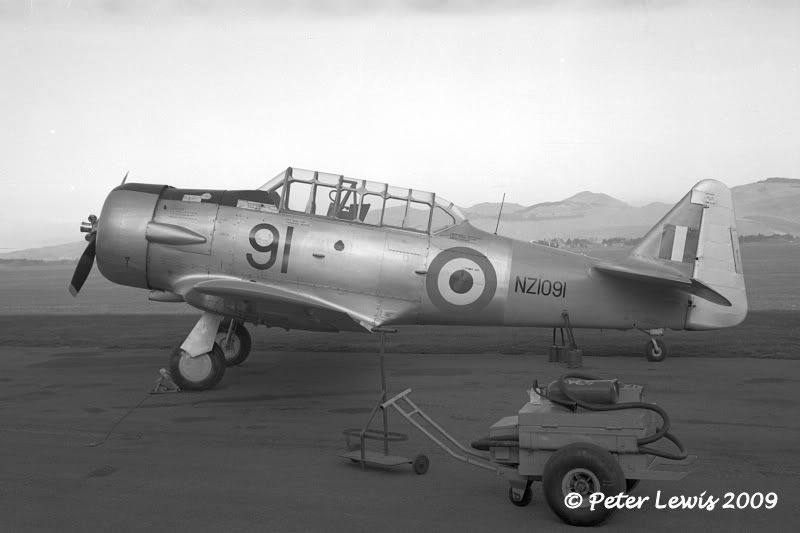 NZ1092 followed a similar career path to '91, remaining active until sold by GSB tender number 02103 to NZ Warbirds Association, Auckland for $1000 on 27 June 1978. Became ZK-WAR with T T Bland & G S Smith, Auckland in September 1978. At Wigram 24Aug1964: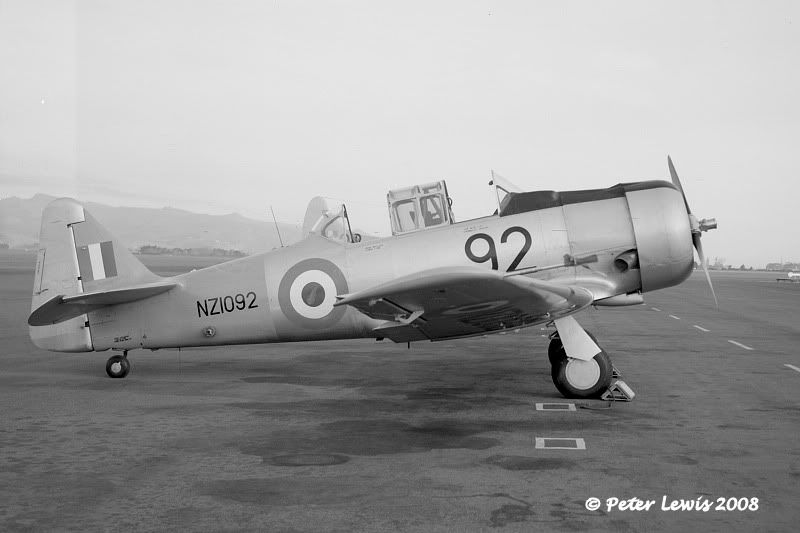 Harvard NZ1096 was eventually sold by GSB tender number 022107 to W. Williams, Mount Maunganui and became ZK-END with W S Bell & R O Dahlberg, Mt Maunganui in June 1978 At Wigram 26Aug1964: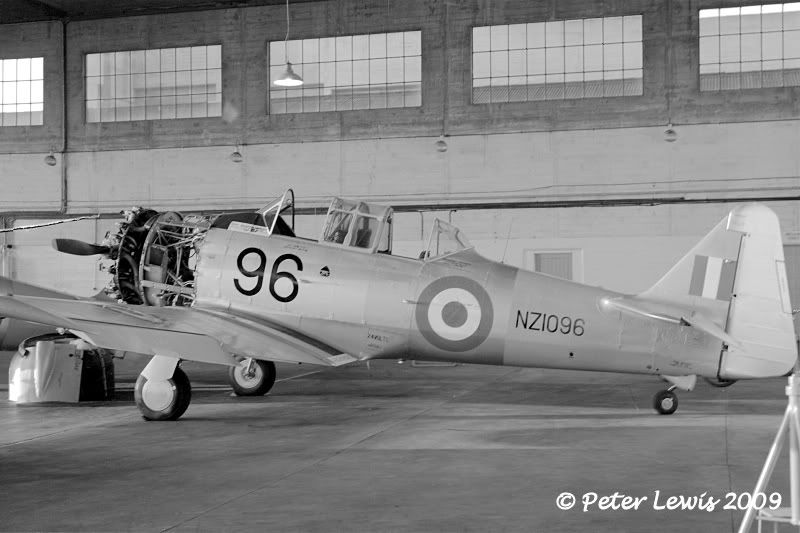 |
|
|
|
Post by shamus on Jun 20, 2009 10:54:53 GMT 12
Peter, that exhaust on NZ1091 is something I have never seen. The usual smoke generator was quite different. I had one some years back but not anymore. Will look for a photo of it if I have one.
|
|
|
|
Post by baz62 on Jun 20, 2009 12:07:59 GMT 12
The pipe work is similar to the pipe fitted to the Red Checker Harvards(I'll post one I have of NZ1015 shortly) except for the flared end it looks very similar
|
|
|
|
Post by Dave Homewood on Jun 20, 2009 14:32:20 GMT 12
|
|
|
|
Post by flyjoe180 on Jun 20, 2009 16:15:08 GMT 12
From the NZ Warbirds description of the Harvard:
The RCAF Harvards, also designated NA-16-1Es by North American, received the charge number NA-61 and were the same as those delivered to the RAF, apart from the chosen paint scheme and the addition of a long "winter" exhaust following their introduction into service. Canada's cold winters would sometimes make the Harvard difficult to start and it was not uncommon for pilots to over prime the engine when it didn't kick over on the first attempt. This would result in a spectacular burst of flame from the standard, short exhaust when the engine did finally start and in some instances, the fuselage would catch fire as a result. The long exhaust, which ran down the side of the nose to the front of the cockpit safely channelled any wayward flames away from the fuselage and had the added bonus of adding warmth to what was normally a very cold cockpit. The modification was subsequently applied to RAF Harvards as well.
|
|
|
|
Post by baz62 on Jun 20, 2009 16:50:16 GMT 12
Yes our MK II Harvards had the long exhaust as well.
|
|
|
|
Post by baz62 on Jun 20, 2009 18:17:38 GMT 12
Ok heres some of my Harvard photos. First up we have NZ1015. Note the pipe for the smoke. (I don't think she has this fitted now.) This was taken at Christchurch Airport, she is actually parked on the 02/20 grass runway. The occasion was the 1987 Christchurch Air Race Airshow.  Below this is a Harvard familiar to harvard1041 as it IS NZ1041. Taken in 1990/91 I believe, she is stored beside the Air New Zealand training school.  And another shot of NZ1041 the sign says "Engine Inhibited" all scrunched up in the engine cowling. |
|
|
|
Post by harvard1041 on Jun 20, 2009 22:54:11 GMT 12
Hi Baz Yes - pretty familiar photos..here's a couple more from early 1991...towed it to Wigram - where we made up the 'partially' retracted frame for the gear...so it would fit in a C-130 - buddy put it into a C-130 one night.    |
|
|
|
Post by baz62 on Jun 21, 2009 9:38:59 GMT 12
I take my hat off to you John, thats a clever solution. Man you have some good buddies, one with a C130 now thats lucky ha ha.
I forgot to ask when I was up at Omaka but is the engine you have an unknown or do have logbooks for it. I suppose at the least you have a good start for a rebuild.
Baz ;D
|
|
|
|
Post by NZ1009 on Jun 21, 2009 13:19:10 GMT 12
I'm with flyernzl on the 1087 / 948 RNZAF Museum aircraft with regard to the multiple identities of Harvards (not disputing the choice of colour scheme but maybe they could cycle thru a few other schemes, particularly the silver with yellow bands which I believe was the longest serving active paint scheme). As a question, why was the 948 (Mk II) serial number chosen for 1087 (Mk III) as, from the photos I have seen, it does not look like a MkII Harvard (no external venturis on the fuselage, no gunsight in front of the cockpit windscreen and probably a few other differences). Seems to me that, given that it is not realistic reproduction of 948 anyway, leaving the serial as 1087 would not really matter. The RAAF Museum has done the same thing with 1037 recoded as 947 and 1060 recoded as 934 - not sure how realistic that paint scheme is? - see below. 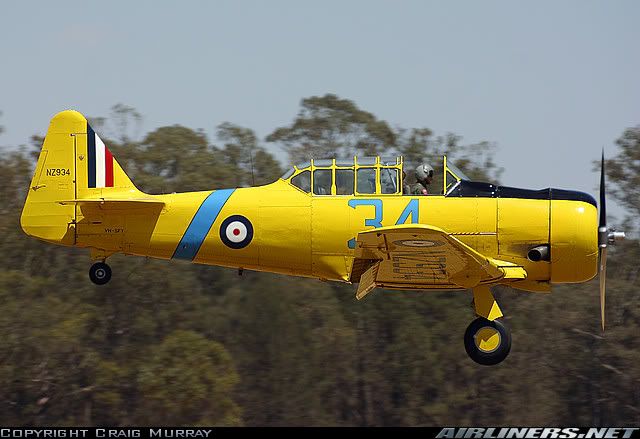 My understanding is that the INST numbers now contain the original serial number. That is a step forward I guess. Along the lines of difficult to identify Harvards, the following photo appears in Brendon Deeres book Military Wings, Volume 2, with the caption "Aircraft from the Advanced Training Squadron of 1 SFTS in late 1941. The aircraft were in overall gloss yellow with black codes and blue rear fuselage bands. The codes bore no relation to aircraft serials and were simply sequential. They can be distinguished from the Intermediate Training Squadron which had codes from 1 to 15 and red fuselage bands". I know that 943 was coded 25 and 936 was coded as 21 but the rest are a mystery to me. Presumably there were some 30 Harvards painted in this colour scheme. Does anyone have any data on this? 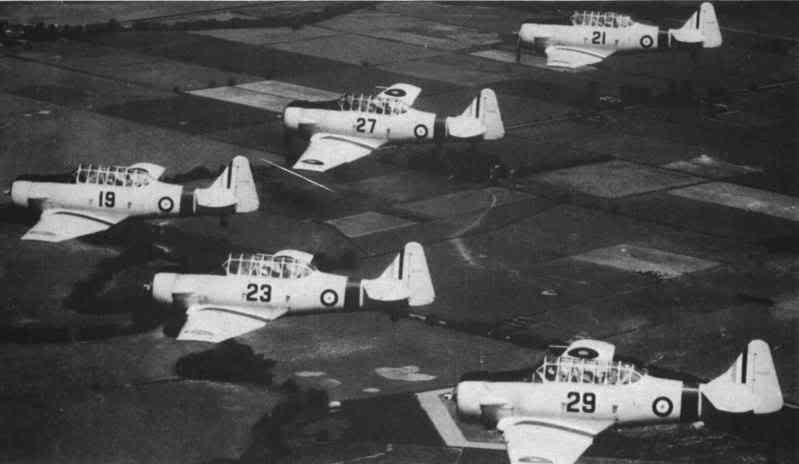 |
|



